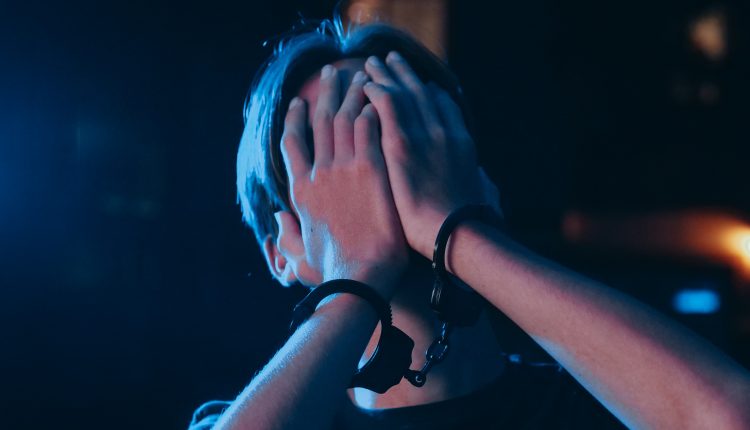
Impulse control disorders: kleptomania
Let’s talk about kleptomania: Impulse Control Disorders are a diagnostic category only recently recognised
Disorders such as pathological gambling, pyromania (which I have already discussed in a previous article), kleptomania and intermittent explosive disorder were only given a diagnostic framework in the DSM III (American Psychiatric Association, 1980).
Only seven years later, in the DSM III-R (American Psychiatric Association, 1987), trichotillomania was also given diagnostic value.
What is kleptomania?
As the term itself indicates, Impulse Control Disorders are generally characterised by a person’s inability to resist a compelling impulse or temptation.
This urge leads the person to perform an action that is dangerous to him/herself and/or others and is preceded by a feeling of increasing tension and excitement followed by pleasure, gratification, and relief (DSM-IV-TR, 2004).
The action is usually followed by a feeling of remorse, personal blame, or guilt.
The diagnostic group of impulse control disorders includes:
- gambling (characterised by maladaptive, recurrent and persistent gambling behaviour); pyromania (characterised by the habit of setting fires for pleasure, gratification, or relief of tension);
kleptomania (characterised by a recurrent inability to resist the urge to steal objects that have no personal use or commercial value); - intermittent explosive disorder (consisting of occasional episodes of inability to resist aggressive impulses and causing serious aggression or destruction of property);
- trichotillomania (characterised by recurrent tearing out of hair or hair for pleasure, gratification, or tension relief and causing significant loss of hair) and impulse control disorder not otherwise specified (NAS) included to codify impulse control disorders that do not meet the criteria for any of the specific disorders described above.
- Currently, there is a tendency to include Compulsive Shopping Disorder, Internet Addiction and Sexual Addiction among Impulse Control Disorders (DSM 5). This is because of certain characteristics common to this class of disorders, such as the tension that precedes the performance of the behaviour, the search for immediate gratification, and the inability to withstand the frustration of avoiding the behaviour.
KLEPTOMANIA AND ITS SYMPTOMATIC EVOLUTION
Kleptomania is a psychological problem.
Kleptomania is listed in the Manual of Mental Disorders (DSM-IV TR) as an Impulse Control Disorder and is characterised by “a recurrent inability to resist the impulse to steal objects that have no personal use or commercial value to the kleptomaniac, who often gives them away or throws them away. More rarely, he may even keep them and return them secretly’.
The theft is not carried out out of revenge, anger, delirium or hallucination, but from the inability to resist a compelling desire.
Psychiatry defines kleptomania as an obsessive form of thinking, as the idea of theft and its completion pervades the mind, preventing any other type of activity.
Often, people with this disorder have first-degree relatives with substance dependency.
There may be subtypes with characteristics similar to OCD and subtypes with characteristics similar to substance addiction and mood disorders (Grant, 2006).
In a clinical study, 28 subjects diagnosed with kleptomania were given specific tests to assess the possible presence of personality disorders.
Twelve subjects with kleptomania (42.9%) also had at least one personality disorder. The most common were paranoid disorder (n=5; 17.9%), schizoid disorder (n=3; 10.7%) and borderline personality disorder (n=3; 10.7%).
Individuals diagnosed with kleptomania in combination with personality disorders had an earlier onset of theft (13.4 +/- 5.6 years) than those diagnosed with kleptomania alone (27.4 +/- 14.2 years) (Grant, 2004).
The person with kleptomania does not usually plan the theft, but carries it out alone, without the complicity or assistance of anyone, taking care not to be arrested.
The act of stealing is preceded by a feeling of increasing tension accompanied by pleasure, gratification and relief following the theft.
The person with kleptomania realises the meaninglessness of the act and may experience depression and a strong sense of guilt as a result.
Kleptomania can cause legal, family, career and personal difficulties
It can begin at any age and seems to be more common among women than men, as is the case with compulsive shopping (with which it has many similarities).
Prevalence studies suggest that in the United States, 6 per 1,000 of the general population, or about 1.2 million people appear to be affected by this disorder (Aboujaoude et al., 2004).
Kleptomania can evolve and change: people may steal sporadically, alternating with long periods of remission, or the condition may be chronic.
The disorder may continue for years despite multiple theft convictions if not adequately treated.
Kleptomania can also be associated with other mental disorders such as eating disorders, major depression, panic disorder, social phobia, substance abuse and obsessive-compulsive disorder itself.
THE CURE FOR KLEPTOMANIA
Treatment for kleptomania is possible, provided the person is truly motivated to get help, and necessarily requires a cognitive-behavioural psychotherapeutic intervention (CBT), as it intervenes on the lack of impulse control through behavioural techniques such as exposure with response prevention, and cognitive techniques such as cognitive restructuring.
In some cases, supportive drug therapy may also help for a certain period, especially if the disorder is associated with depressive symptoms.
Article written by Dr Letizia Ciabattoni
Read Also:
The Florence Syndrome, Better Known As Stendhal Syndrome
Stockholm Syndrome: When The Victim Sides With The Perpetrator
Placebo And Nocebo Effects: When The Mind Influences The Effects Of Drugs
Jerusalem Syndrome: Who It Affects And What It Consists Of
Notre-Dame De Paris Syndrome Spreading Especially Among Japanese Tourists
Lima Syndrome: When Kidnappers Remain Emotionally Attached To Their Captors
What If Ebenezer Scrooge Suffered From Christmas Blues ?
Source:
https://www.istitutobeck.com/disturbo-controllo-impulsi
https://www.psichiatriaedipendenze.it/sintomi-disturbi/cleptomania/
Aboujaoude et al (2004) Overview of Kleptomania and Phenomenological Description of 40 Patients. Prim Care Companion J ClinPsychiatry. 6(6): 244-7.
Grant JE (2006). Understanding and treating kleptomania: new models and new treatments.Isr J Psychiatry Relat Sci. 43(2): 81-7.
Grant JE (2004). Co-occurrence of personality disorders in persons with kleptomania: a preliminary investigation. J Am Acad Psychiatry Law. 32(4): 395-8.



